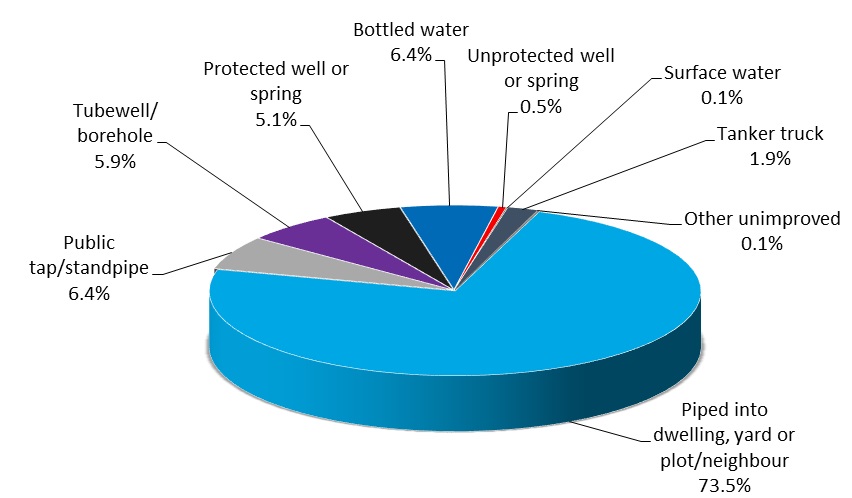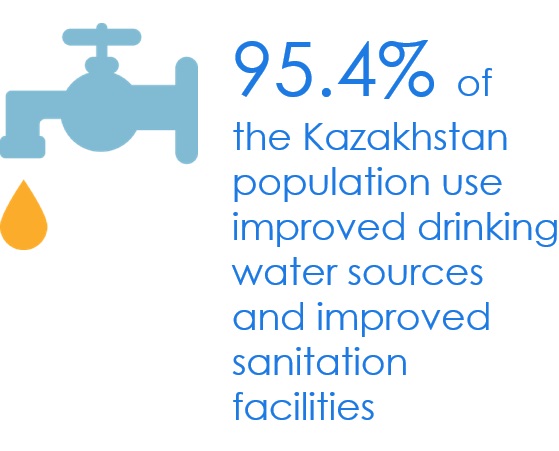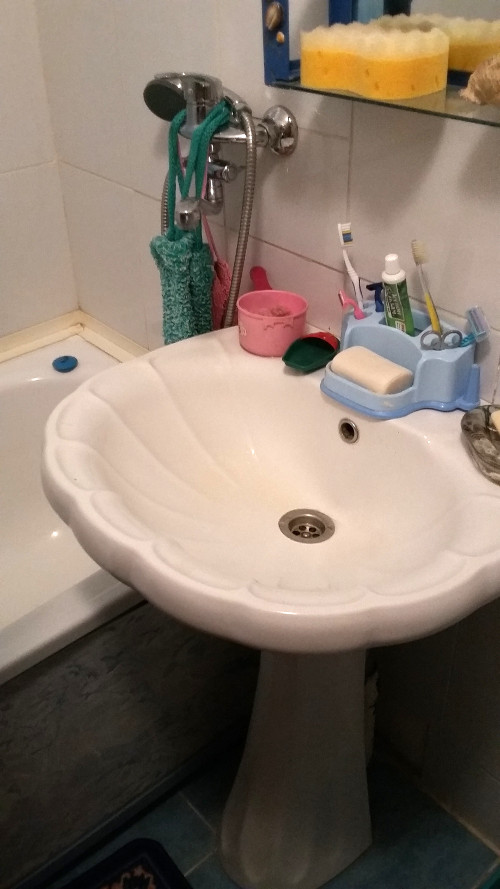
In Kazakhstan, the majority, or 97.3 percent of the population, use improved drinking water sources: 99.7 percent in urban and 94.6 percent in rural areas.
Improved access to drinking water can prevent diseases such as diarrhea, malaria and malnutrition but can also be particularly important for women and children, especially in rural areas.
In Kazakhstan, the majority, or 97.3 percent of the population, use improved drinking water sources: 99.7 percent in urban and 94.6 percent in rural areas.
The main drinking water source is piped water, which is used by almost 80 percent of the population.
Across the country, 46.4% of households use unimproved drinking water sources, also use the appropriate water treatment methods. Almost a third of the population use water boiling, 25.8% use filtering utilizing different filters, and more than 8% of the population use water setting.

Lack of access for part of the population to improved sanitation and clean water is one of the factors of the spread of intestinal infections that cause various diseases, one of which is diarrhea.
Overall, 99.9 percent of Kazakhstan's population live in households using improved sanitation facilities which are not shared with no notable differences by background characteristics.
An improved sanitation facility is defined as one that hygienically prevents human contact with human excreta. Improved sanitation facilities for excreta disposal include flush or pour flush to a piped sewer system, septic tank, or pit latrine; ventilated improved pit latrine, pit latrine with slab, etc.

In the country, 48.1 percent of the population use flush or pour flush toilet facilities, and 51.8 percent use pit latrines with slabs or ventilated improved pit latrines.
In urban areas, more than 68 percent of the population use facilities that flush to a piped sewer system, while in rural areas 85.5 percent of the population use pit latrines with slabs or ventilated improved pit latrines.
Having access to both an improved drinking water source and an improved sanitation facility brings the largest public health benefits to a household.
In Kazakhstan, 97.3 percent of households have access to improved sources of drinking water and 98.0 percent of households have access to improved sanitation. Countrywide, 95.4 percent of the population have access to improved sources of drinking water and improved sanitation.
Handwashing with water and soap is the most cost effective health intervention to reduce both the incidence of diarrhea and pneumonia in children under five.
In Kazakhstan, almost every household (99.0 percent) had both water and soap at the specific place for handwashing.

Almost every household had both water and soap at the specific place for handwashing.